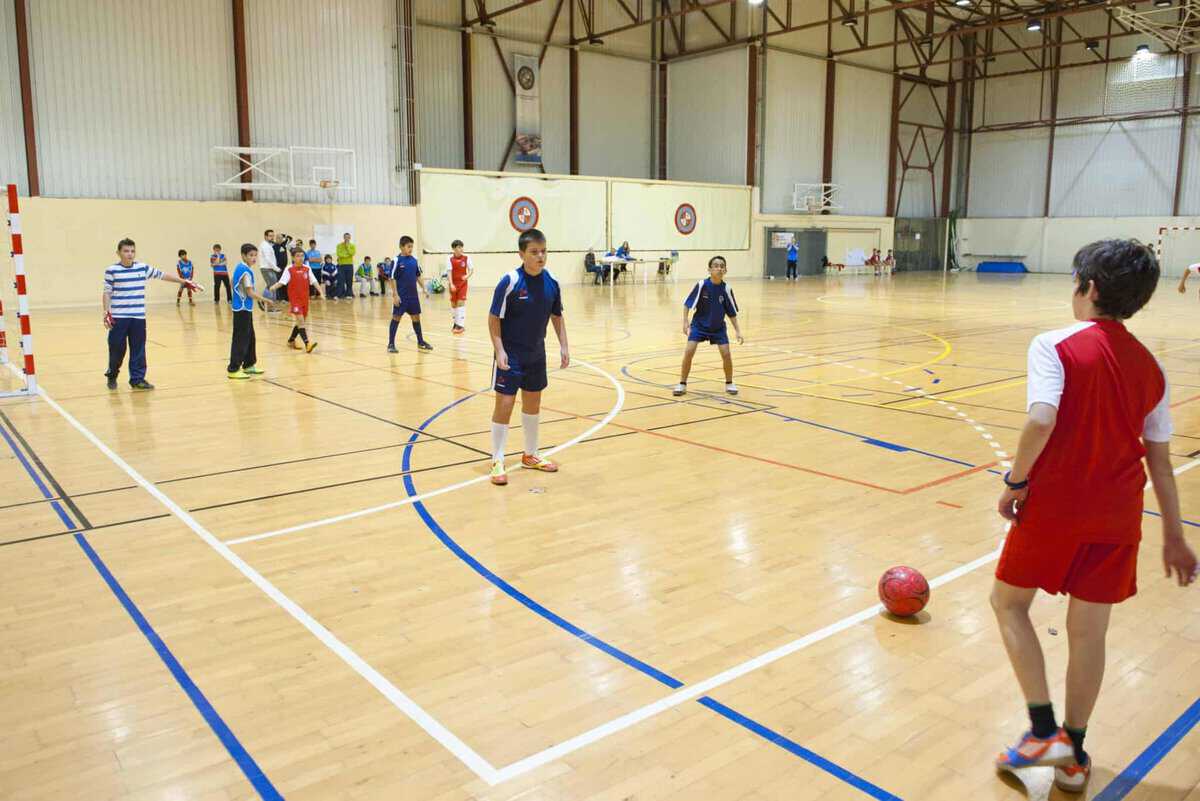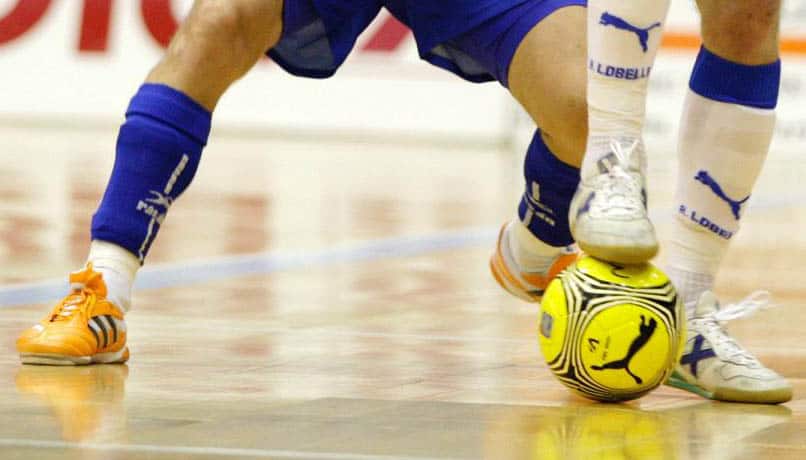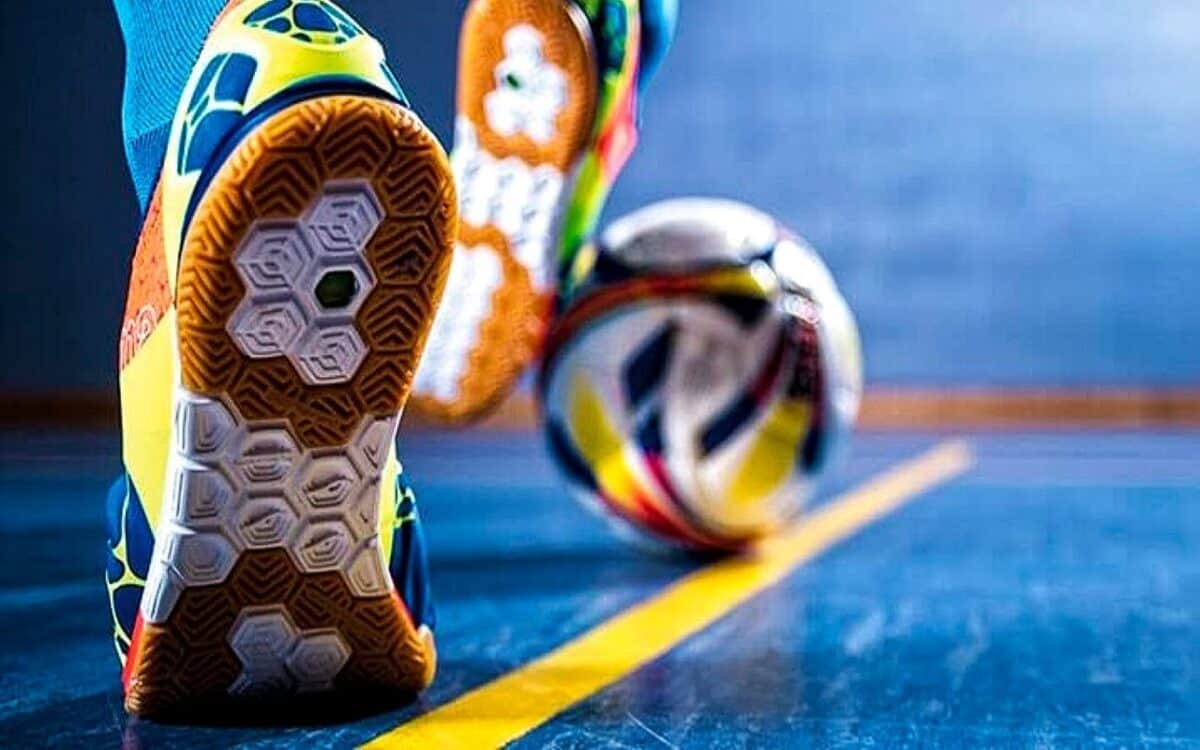In the following article, futsal games are discussed as a possibility of sports content within the educational field, specifically in the subject of Physical Education, which can be addressed both in Primary and Secondary Education.
Futsal
Futsal is a collaboration-opposition sport in which two opposing teams play seeking to outscore the opponent. Each team plays with 5 players on the field, 4 plus the goalkeeper.
To know the origins of futsal, we have to go back to the 19th century specifically in Canada.
Initially, this sport was developed as an alternative for soccer players in places with cold winters to continue practicing the sport, adapting it to the characteristics of indoor courts, usually using ice hockey rinks where they placed wooden floors to have dual functionality (1).
At the beginning of the 20th century, external courts began to be used that simulated soccer played on hockey rinks, maintaining the 11 players, but playing on wooden squares that replaced conventional grass.
At the end of the same century, tournaments began to develop and the number of players decreased to 6.
On one hand, there is this approach to what we know as futsal today, while on the other hand, we find the origin of the sport as it is played today in 1930, in Uruguay.
It started with 5 players on a basketball court and later expanded to the current 40×20 meters.
Initially, it was played within the educational field and later the practice began to spread.
Staying within the treatment of futsal within the educational field, we find that this is another content to address alongside the motor actions of collaboration-opposition activities, both in primary physical education introducing the work and coordination of the lower limbs with specific skills, and later in secondary education.
Next, different alternatives related to futsal games that can be introduced within the sessions of the Physical Education subject are shown.
Futsal games
There are many options regarding futsal games that can be put into practice, always seeking suitability to the development and characteristics of the students.
The objectives of these, among others, can be the following (2):
- Know the fundamental elements of the sport.
- Improve the skills involved through futsal games
- Use basic attack and defense strategies
- Know and respect the rules and teammates and opponents
- Work as a team
Regarding the characteristics, it is sought that they participate simultaneously, minimizing waiting time, pose problems that the student can solve, seek challenges for the students regardless of their level, ensuring their success, and finally promote coeducation, inclusion, cooperative work, and respect and tolerance.
Below are some of the futsal games that we can propose:
- Cooperative games with a ball: the objective of the game is participation and development of motor actions working towards the same goal, without posing opposition or competitiveness, promoting everyone’s practice. For example, we find challenges like “don’t let the ball fall” or “route to the basket”.
- Strategy games with a ball where, in small groups, students are encouraged to develop different strategies, 3×3, 4×4, and as the last step of the progression 5×5, both related to attack and defense.
- Roles can be assigned to teams, and the same ones always defend and attack, and roles are changed over time or alternated in each completed play.
- Similarly, the strategy they must perform (zonal defense, one-on-one…) can be proposed, or they can decide to propose their strategy, both in attack and defense.
- Games with jokers where the jokers alternate their role depending on the team in possession
- Real game situations with variants:
- only one or two touches per person
- all players of the same team must touch it before shooting at the goal
- …
- Adapted and inclusive games like adapted football 5, with blindfolds and a sound ball.
- Initially, it can be worked on to sensitize students with futsal games focused on a single technical aspect, such as passing in pairs and control, and later increase the difficulty with more complex aspects by increasing the number of participants per group, the number of balls, etc.
Educational treatment of futsal games
Futsal games are a good alternative to work on the content of this sport without having to focus directly on analytical exercises to work on technique or tactics specifically.
Likewise, the importance of these games can be highlighted to promote the integral development of students, fun, improvement of their motivation towards sports practice, and the class climate.
Regarding the climate, it should be emphasized when planning and developing the sessions in the approach focused on the task climate, seeking the student’s development without comparing themselves to others, while focusing on supporting the NPB. Supporting them, and increasing motivation, presents a positive and significant correlation with fun (3).
Relationship between futsal games and other educational content
Both the sport itself and futsal games show a close relationship with other content related to the same motor actions such as handball, hockey, etc.
Collaboration-opposition sports that present similar game structures, with a similar number of players and many common aspects, especially at the tactical level, such as space occupation.
It is an aspect that should be taken into account when planning the work content during the educational stage, seeking the transfer between them and taking advantage of the improvements they can generate in students and the increase in their skills and knowledge.
Practical proposal of futsal games
A session is proposed through futsal games, linked to supporting social relationships through groups with mixed and heterogeneous groupings.
During the development of the activities, the teacher will go through the groups giving feedback and promoting the development of the NPB (4).
The session is divided into warm-up, main part, and cool down.
- Warm-up: play Pac-Man following the lines of the field, dribbling the ball both for the players who catch and those who are caught. When a player is caught, roles are changed.
- It starts by walking and then jogging
- Main part: 3 games are played with a duration of 10 minutes per game:
- The handkerchief with a ball (2 players from each team come out at the same time dribbling the ball to get 2 handkerchiefs, seeking to minimize passive waiting time)
- Foxes, hens, and vipers: each team with bibs to differentiate themselves. With 3 balls, one per team, only the player with the ball can catch the opponent, so they must move through space and make constant passes so that each team can achieve the objective and catch the maximum number of players.
- Initially, players who are caught leave the field and help with the team’s strategy by acting as a coach.
- Subsequently, as another variant, players can be saved if they are passed the ball and return it accurately. Due to its complexity in terms of organization and understanding of the game, this variant is carried out with students in the final years of ESO.
- Football-tennis: in groups of 6, they face off 3×3 in small fields divided with a Swedish bench.
- Cool down: stretching and massages in pairs with a ball.
All futsal games can be adapted to the characteristics of the students, facilitating or complicating their practice to achieve their objectives.
Conclusions
To make the practice of a sport more motivating, the content can be worked on through sports-recreational games.
In this case, through futsal games, which promote fun and motivation of the students, making them acquire the proposed knowledge and skills, potentially changing their habits and showing attractive and appealing leisure alternatives.
Bibliography
- Cachón-Zagalaz, J., Rodrigo-Conde Salazar, M., Campoy-Aranda, T. J., Linares-Girela, D., & Zagalaz-Sánchez, M. L. (2012). FUTSAL AND EDUCATION. LEARNING A TEAM SPORT FOR STUDENTS. Journal of Sport & Health Research, 4(3). Retrieved from: http://www.journalshr.com/papers/Vol%204_N%203/V04_3_4.pdf
- García, F. and Sánchez, S. (2011). Didactic unit: “Futsal in Physical Education classes”. EFdeportes, 152.
- Abós, A., Sevil, J., García-González, L., Aibar, A., & Sanz, M. (2015). Positive experiences in Physical Education through teacher intervention in futsal content (No. ART-2015-93042). Retrieved from: https://zaguan.unizar.es/record/32792
- Serrano, J. S., Catalán, Á. A., Lanaspa, E. G., Solana, A. A., & García-González, L. (2016). Importance of supporting basic psychological needs in predisposition towards different contents in Physical Education. Retos. New trends in physical education, sport and recreation, (29), 3-8. Retrieved from: https://www.redalyc.org/pdf/3457/345743464001.pdf




